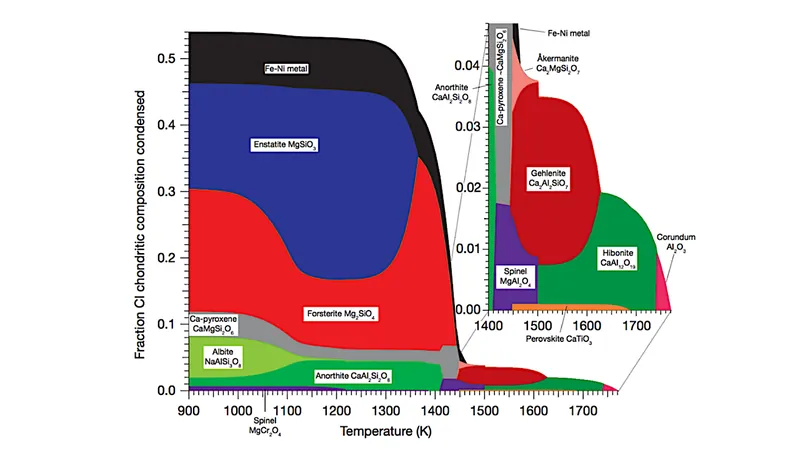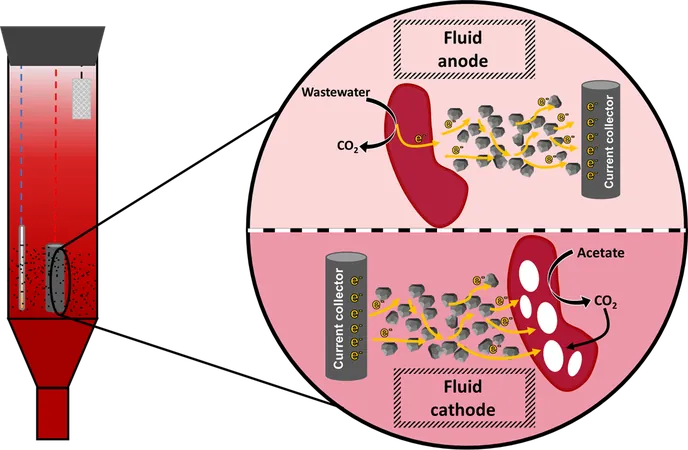
Unearthing the Secrets of the Solar System: What Meteorites Tell Us About Our Cosmic Origins
2025-06-06
Author: Wei Ling
Unlocking the Mysteries of the Solar System
How did our Solar System come to be? This age-old question is all tied to the remnants of its formation, dating back 4.567 billion years. Scientists are diving deep into the clues left by meteorites and, to a lesser extent, comets, which provide a fascinating glimpse into the cosmic story of our celestial neighborhood.
Planet Formation: A Collision Course
According to recent findings, the planets were born from a chaotic dance of colliding materials in the system’s infancy. The first hundred million years were pivotal, as roughly 100 km-scale building blocks known as planetesimals came together to form the worlds we know today.
Survival of the Fittest
While many of these original planetesimals either merged into planets or were flung into space—some even crashing into the Sun—only a tiny fraction remain. Today, these survivors are found primarily as asteroids and comets, representing a mere 0.05% of Earth’s mass.
The Role of Meteorites in Solar System Research
Meteorites, the fragments that have made their way to Earth from asteroids, serve as treasure troves for scientists. Each meteorite offers a snapshot of the processes that shaped our Solar System. Unlike comets, which are hard to study due to their rarity in samples, meteorites can be collected and analyzed in laboratories, providing critical data.
Decoding the Cosmic Puzzle
By examining the mineral composition, elemental ratios, and isotopic signatures of these meteorites, researchers can piece together older cosmic secrets. They’re unlocking clues about the building blocks of planets, the environmental conditions during their formation, and even establishing timelines for how and when these celestial bodies accreted.
Isotopes: The Key to Understanding Planet Formation
Of particular interest are stable isotope variations and nucleosynthetic anomalies, which help elucidate the dynamics of the early solar disk and the processes that formed planets. These findings are critical as they integrate into refined models that explain our Solar System's formation.
The Earth Connection: Water and Organics
Finally, the discussion would be incomplete without touching upon Earth's evolution. Researchers are keen to uncover how volatiles like water and organic materials were brought to our planet during its early years, reshaping not only its geology but possibly the origins of life itself.
A Collaborative Effort
This exploration is driven by a team of scientists, including Bernard Marty, Katherine R. Bermingham, Larry R. Nittler, and Sean N. Raymond, who are dedicated to deciphering the grand narrative woven into the fabric of solar materials.





 Brasil (PT)
Brasil (PT)
 Canada (EN)
Canada (EN)
 Chile (ES)
Chile (ES)
 Česko (CS)
Česko (CS)
 대한민국 (KO)
대한민국 (KO)
 España (ES)
España (ES)
 France (FR)
France (FR)
 Hong Kong (EN)
Hong Kong (EN)
 Italia (IT)
Italia (IT)
 日本 (JA)
日本 (JA)
 Magyarország (HU)
Magyarország (HU)
 Norge (NO)
Norge (NO)
 Polska (PL)
Polska (PL)
 Schweiz (DE)
Schweiz (DE)
 Singapore (EN)
Singapore (EN)
 Sverige (SV)
Sverige (SV)
 Suomi (FI)
Suomi (FI)
 Türkiye (TR)
Türkiye (TR)
 الإمارات العربية المتحدة (AR)
الإمارات العربية المتحدة (AR)